Slide3 Introduces Sensitivity Analysis to Refine Your Workflows
- Dr. Sina Javankhoshdel, Geomechanics Product Manager
- Cristian Salvalaggio, Software Developer
Slide3’s new sensitivity analysis feature gives you critical insights about how material properties influence slope stability, so you make smarter and faster decisions.
By identifying the material properties that have the greatest impact on slope stability, you can focus your efforts on the most critical factors and create efficient designs with a better understanding of potential risks.
How To Define Statistical Material Properties in Slide3
Building upon Slide3’s existing probabilistic analysis, you can define a statistical material property by mean, minimum, and maximum value. You can analyze any material property in Slide3 using sensitivity analysis and future releases will enable analysis for an even broader range of model properties such as supports and seismic coefficient.
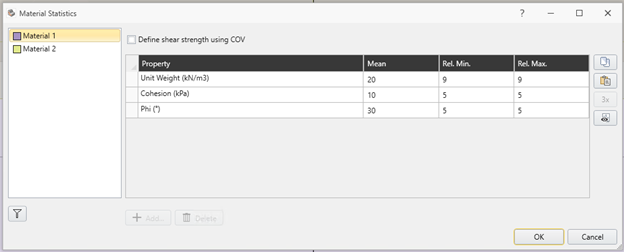
After defining the statistical material properties, simply compute your model to perform sensitivity analysis. Analysis will use the global minimum slip surface found during search. From the resulting plot, you can easily identify which material properties have the greatest effect on the factor of safety. In the plot below, for example, Material 1: Phi (°) shows a greater range of outcomes for FoS than Material 2: Cohesion (kPa).
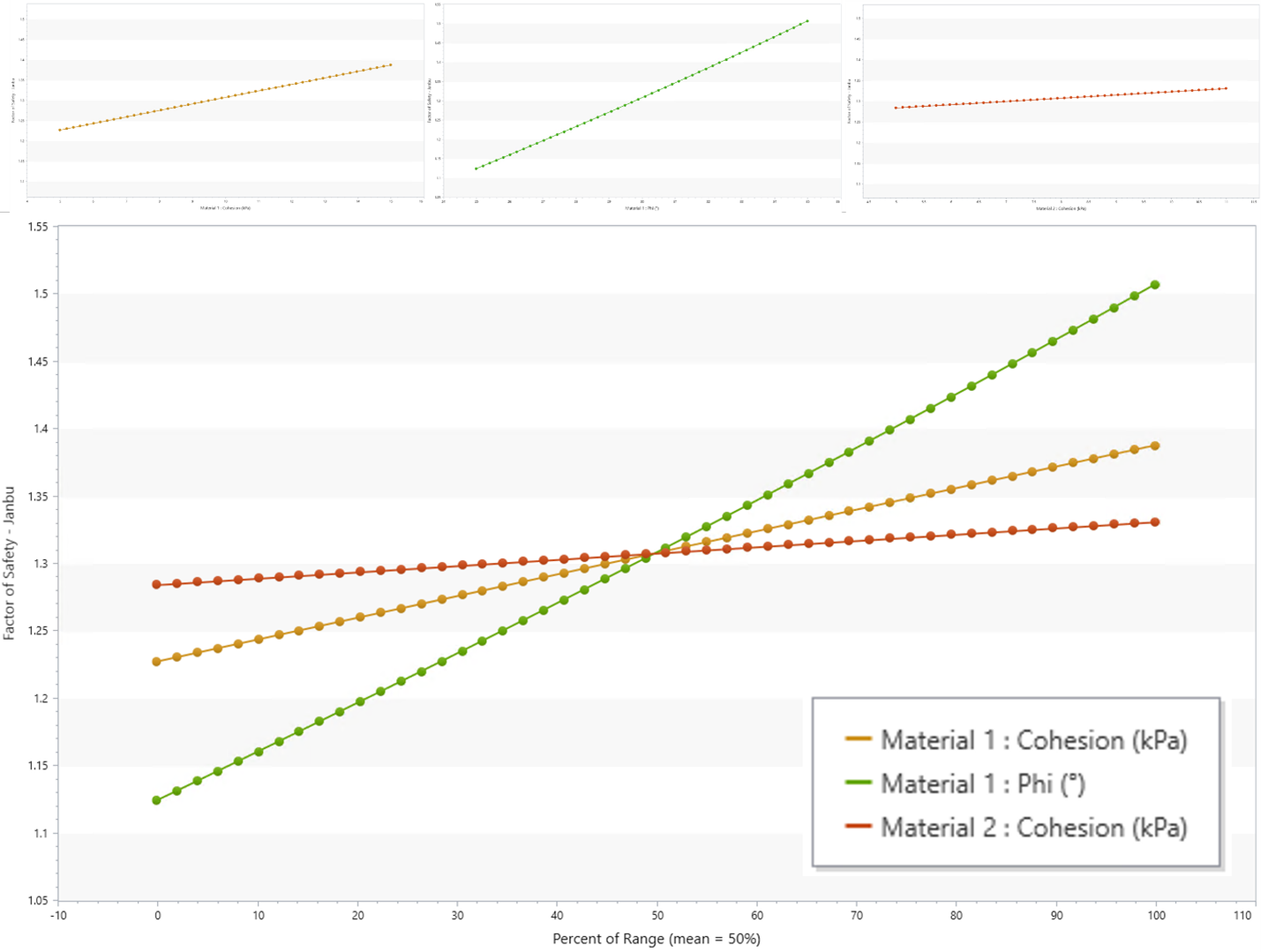
Going Beyond 2D
Slide3’s sensitivity analysis uses the same procedure as Slide2, so for a simple slope you can verify your results by comparing with a section exported to Slide2. In the plot below, you can see how Slide2’s sensitivity analysis produces a very similar plot. Of course, in 3D you can model with greater complexity and detail, allowing you to capture more information in your Slide3 sensitivity analysis.

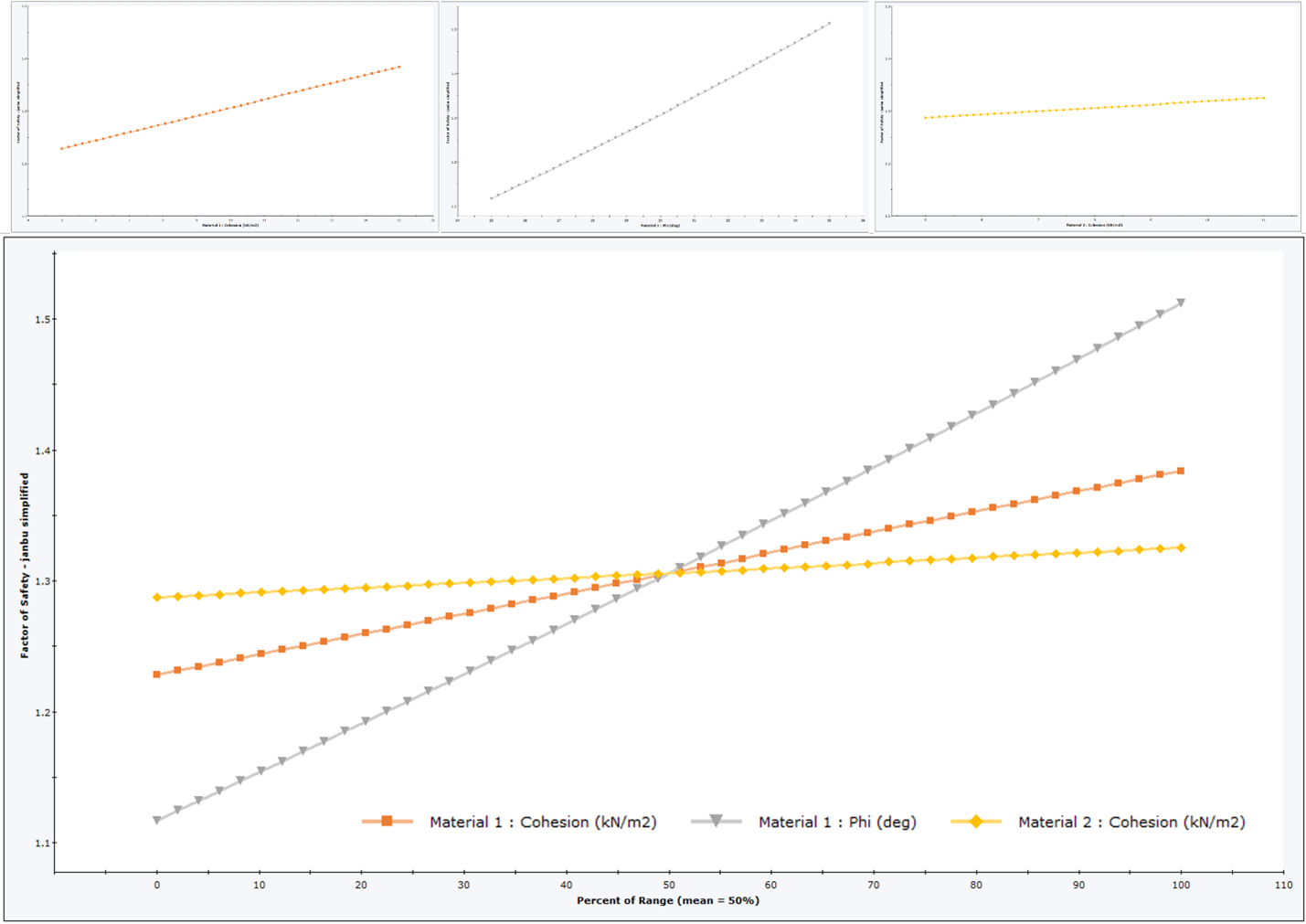
For more information on sensitivity analysis in Slide3, see our documentation on the new feature.
Probabilistic Analysis in Slide3
As mentioned above, investigating the influence of each material on slope stability is also possible using the existing probabilistic feature in Slide3. To do this, you can enable the probabilistic analysis option in the project settings (Figure 5), then define a uniform distribution with the same minimum and maximum relative values for material parameters as used in the sensitivity analysis (Figure 6).
It is important to note that sensitivity analysis is only available for the Global Minimum Factor of Safety analysis, whereas probabilistic analysis can be applied to either Global Minimum or Overall Slope analysis. Additionally, sensitivity analysis examines one parameter at a time while holding others constant, whereas in probabilistic analysis, all parameters are treated as variables.
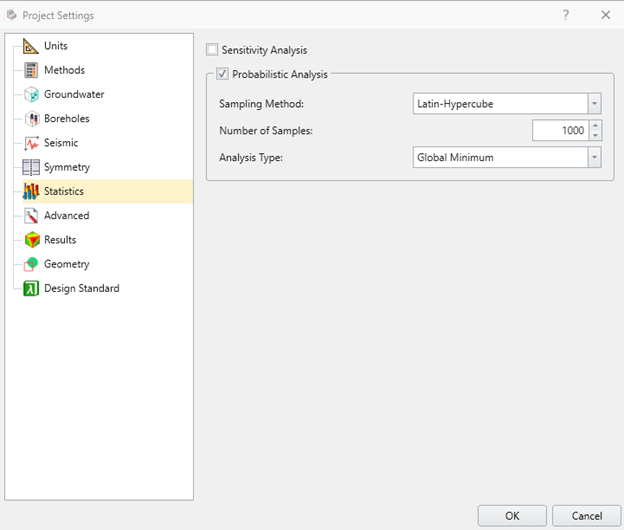
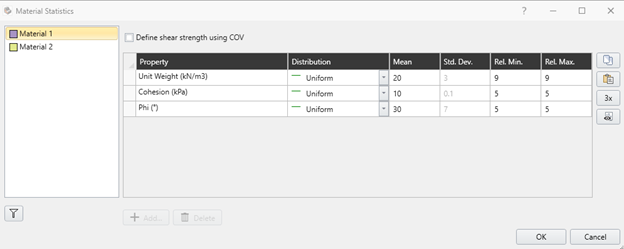
The results of the probabilistic analysis can be presented using scatter plots (Figures 7 and 8) or as a histogram of the factor of safety (Figure 9).
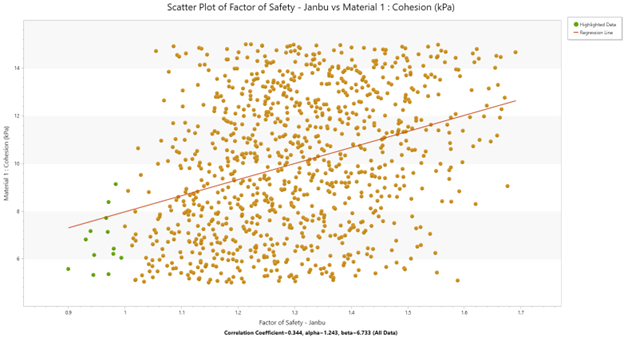
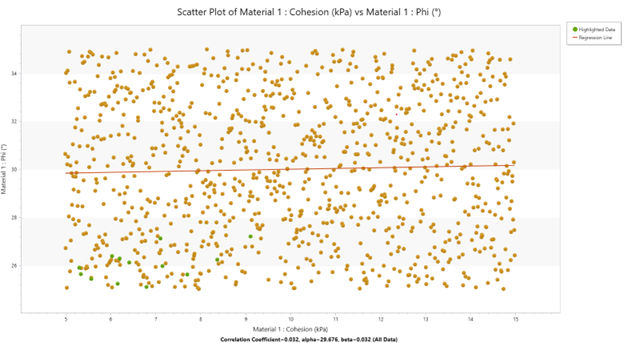

Keep in mind that, just like Slide2, sensitivity and probabilistic analysis in Slide3 can be performed simultaneously.
Make Smarter Decisions With Slide3
Whether you need to pinpoint the impact of a single material property or understand the combined effects of multiple variables, Slide3’s new sensitivity and probabilistic analysis features offer a powerful toolkit for evaluating slope stability. You’ll get all the insight you need to optimize designs, reduce risks, and ensure safety.
Click here for a free trial of Slide3 or get in touch to learn more about out software.